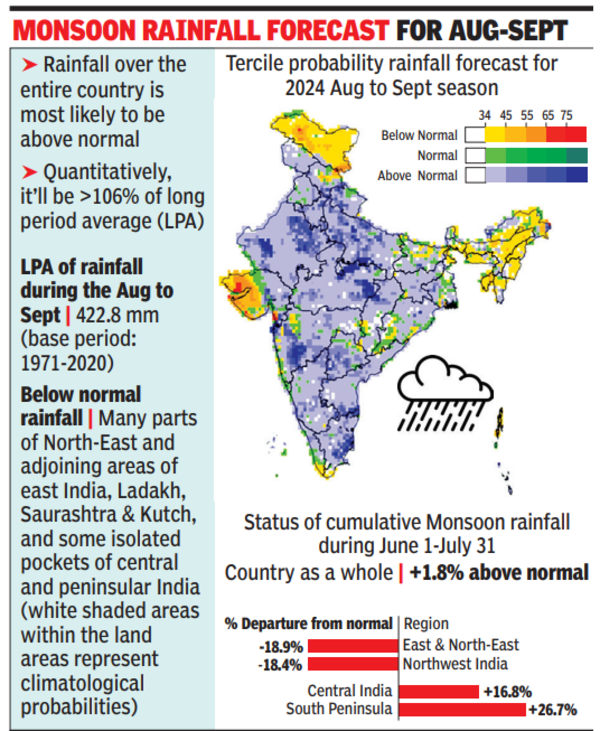Though Aug may see a short break in the monsoon phase towards the middle of the month, it’ll not impact the overall rainfall during the two months – crucial for Kharif sowing as well as the standing crops.On the flip side, rains triggered by La Nina in Sept may see multiple incidents of city flooding, floods in low-lying areas and landslides in hilly terrain.
La Nina is a periodic cooling of ocean surface temperatures in the central and east-central equatorial Pacific. Such climatic conditions are generally associated with good monsoon rainfall in India. Nevertheless, certain parts of the country may still face ‘below normal’ rainfall like what eight states experienced in July.
“During the second half of the monsoon season, normal to above normal rainfall is most likely over most parts of the country, except many parts of northeast and adjoining areas of east India, Ladakh, Saurashtra & Kutch, and some isolated pockets of central and peninsular India where below normal rainfall is likely,” said IMD chief Mrutyunjay Mohapatra.
Releasing the forecast for Aug, Mohapatra said “normal to above normal rainfall” is likely over many parts of the country this month, except many areas in southern parts of central and adjoining northern peninsular India, northeast and adjoining areas of east India, some parts of northwest and south peninsular India, where below normal rainfall is likely.
Though the country recorded 11% deficit monsoon rainfall in June, the sowing operations in many parts of the country continued unabated with the help of irrigation using groundwater. Despite a skewed distribution of rainfall, July finally logged out with 9% more rains than normal. It helped farmers to increase acreages in the rain-fed areas, bringing the total sown area at 812 lakh hectares as on last Friday which was 18 lakh hectares more than the corresponding period last year.
